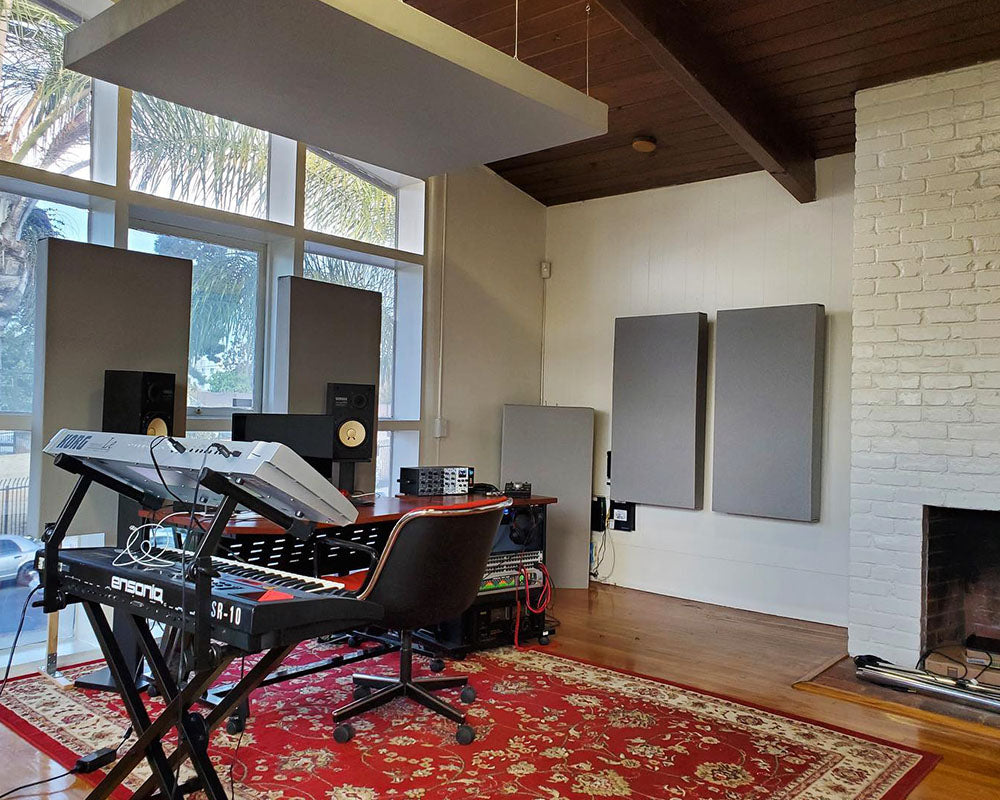A Quick Guide to Bass Traps
 John hunter Acoustics
John hunter Acoustics
Do you have a recording studio at home? Great!
But are you facing the problem of low-end build-up? If yes, then don’t worry. Bass traps can solve your problem. If you already have lightweight or thin acoustic panels for homes, they can’t do everything. Both of these have their functions and benefits. An acoustic board is used to absorb the mid to high frequencies, while a bass trap helps treat and absorb low-frequency sound.
If you are still wondering why bass traps are necessary, then don’t worry. Below, we will compile a list of points that will help you understand why bass traps are vital.
Do You Really Need Bass Traps?
● Lightweight and thin materials can’t absorb bass frequencies:
Nothing can replace what bass traps do. If you think that foam, blankets, or other lightweight materials will absorb bass frequencies, then you are mistaken.
Bass bounces off of walls creating boominess that sometimes even drowns the rest of the sound out too.
● Thin Acoustic panels can never replace bass traps:
1” and 2” Acoustic Panels are vastly different from the absorption properties of Bass Traps. Thin Acoustic panels such as ones that are 1” or 2” thick only work for high and mid-range frequencies. Evening out and quieting down low-end bass frequencies can only be done with bass traps.
● Bass traps are a must for small rooms and large rooms:
Both small and large rooms need bass traps. If you are recording in a small space or a large space then a bass trap is what you should have and you should have a certain number of them treating areas of sound buildup and reflection. Their placement of them is vital as well.
If you are confused about choosing what bass trap works best, look at the points mentioned below. These points will give you an idea of important points you should keep in mind while purchasing a bass trap.
Tips To Consider While Buying A Bass Trap:
● Manufacturer: Every time you purchase a bass trap, try to buy it from an experienced company since they’ll have better and more updated products.
● Shape & design: Choose the shape and design of your bass trap carefully and the one that works best on your walls and looks great in your room. There are different shapes of bass traps available in the market; choose them as per your liking while keeping in mind quality and the correct type of materials.
● Size: Choose a size of bass trap for home studio that fits great in your space, especially in the corners. For that, it would be better for you to measure the corners first and then buy them accordingly.
● Material: Ensure the bass trap is made from any of these three materials, Rockwool or fiberglass. Don’t make the mistake of going for cheap materials as these won’t be able to meet your expectations.
Subscribe to my newsletter
Read articles from John hunter Acoustics directly inside your inbox. Subscribe to the newsletter, and don't miss out.
Written by

John hunter Acoustics
John hunter Acoustics
I saw a need for quality acoustic panels and starting with a great idea and a little hard work built up the company to its respected position today. We're proud to provide quality products direct to your doorstep through an experience you'll enjoy.